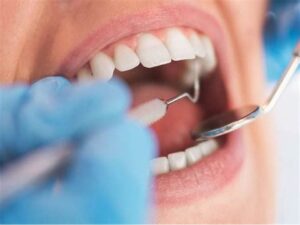Pain while chewing? Sensitivity in the back teeth? These are often signs of molar tooth decay, one of the most common dental issues—even today. Molars are easy to miss when brushing and flossing, and their deep grooves make them a common spot for plaque to build up.
Even with better toothpaste and more dental products on the market, molar decay still shows up in both kids and adults. Dentists at Clark Pediatric Dentistry Orthodontics often see this type of decay in families and young patients, especially in hard-to-reach back teeth.
So, what are the best ways to treat it now? There are new treatments in 2025 that are faster, more comfortable, and work really well—some without even needing a drill. Which ones make the biggest difference? Five of the most effective treatments now used to fix molar tooth decay can help stop damage early and protect the tooth for the long run.
Recognizing When a Molar Might Be in Trouble
Not all tooth problems are easy to spot, especially when they start in the back. Molar tooth decay can quietly build up over time before you feel anything at all. That’s what makes it tricky—many people don’t notice it until it starts to hurt or cause sensitivity.
Look out for these common signs:
- Pain when chewing or biting down
- Sensitivity to hot or cold drinks
- Visible dark spots, holes, or tiny pits on the tooth surface
- Food getting stuck more often in one area
Sometimes, even with braces, molars can be harder to keep clean. That’s why some patients with braces in Clark NJ or elsewhere may be more likely to deal with decay in those back teeth.
Catching the problem early can make treatment quicker and easier. A small cavity is much simpler to fix than a larger one that reaches the root. Noticing changes early gives your dentist more ways to save the tooth before things get worse.
Why Molar Decay Needs Quick and Proper Treatment
Molars do a lot of the hard work when you eat. They help grind food and keep your bite even. When one of them has a problem, it can throw everything off. Molar tooth decay might start small, but waiting too long to fix it can lead to bigger issues.
In some cases, untreated decay can spread deeper and cause an infection. That could mean swelling, pain, or even a serious abscess. If the damage gets too bad, the whole tooth might need to come out.
Fixing the problem early can save time, money, and avoid the need for major work like root canals or extractions. Even people using Invisalign in Scarborough need to keep an eye on their molars since tooth alignment depends on a strong, healthy bite.
Quick treatment means fewer problems later—and a much better chance of keeping the tooth in place for years to come.
Top 5 Amazing Molar Tooth Decay Treatments in 2025
From new materials to non-invasive techniques, here are five standout treatments dentists are using right now to stop molar tooth decay in its tracks.
1. Tooth-Colored Composite Fillings
Fillings don’t have to stand out anymore. Tooth-colored composite fillings are made to match your natural teeth, so they blend right in. They’re strong enough for back molars and don’t include any metal or mercury. That means no silver spots and no sharp edges—just a clean, smooth fix. This option works best when the decay is small to medium. It’s a quick, reliable way to fix cavities without changing the way your bite feels.
2. Dental Inlays and Onlays
When a filling isn’t quite enough—but you don’t need a full crown—dentists might suggest an inlay or onlay. These are custom-made pieces that fit into or over the damaged part of your molar. They’re shaped to match your exact tooth and are less invasive than crowns. You’ll still keep most of your tooth, which is great for long-term strength. It’s a smart middle-ground fix for bigger cavities and often lasts longer than a standard filling.
3. Same-Day Crowns with 3D Scanning
Getting a crown used to take more than one appointment. But with 3D scanning and new in-office tools, some dentists now offer same-day crowns. That means you can walk in with a problem and leave with a full, strong crown—without wearing a temporary or waiting weeks. These crowns are custom-designed using digital scans, so they fit well and hold up over time. If the tooth is badly damaged, this time-saving fix is a great choice.
4. Silver Diamine Fluoride (SDF) for Early Decay
Not all cavities need a drill. Silver diamine fluoride (SDF) is a liquid dentists apply to early decay to stop it from getting worse. It’s pain-free and works quickly, which makes it a good choice for kids or anyone nervous about dental work. There’s no numbing or drilling involved. The only downside is that it can stain the spot dark, so it’s mostly used on back teeth that don’t show when you smile.
5. Pulp Capping and Regenerative Techniques
If decay gets close to the nerve but hasn’t reached it, pulp capping may help avoid a root canal. Dentists use a special material to protect the pulp and encourage healing. Some newer options even support the tooth in repairing itself. This kind of treatment is newer and may not be available everywhere, but it’s a strong step toward saving natural teeth. Patients wearing clear Braces Clark NJ or other aligners still need strong, healthy molars to keep treatment on track.
How to Choose the Right Treatment for Your Molar
Not every treatment works the same for every tooth. The right fix for molar tooth decay depends on how deep the cavity is, how much of the tooth is still healthy, and what your dentist sees during your exam. Some people may only need a small filling, while others might need a crown or something more advanced.
A proper check-up is the only way to know for sure. Your dentist can explain the options and help you figure out what makes the most sense. Things like cost, insurance, and your comfort level also matter.
Even patients using Invisalign in Scarborough need to make sure their molars stay strong, or it can affect how well the treatment works.
Preventing Molar Decay After Treatment
Stopping molar tooth decay from coming back takes a few simple habits. Sealants are a great first step, especially for kids and teens. They cover the deep grooves in molars where food and bacteria usually get stuck.
Flossing is just as important—especially around those hard-to-reach back teeth. Make sure you’re getting between each molar, even behind the very last one.
Fluoride toothpaste and regular cleanings help keep enamel strong and catch small issues early.
For people using clear braces in Toronto or anywhere else, keeping those back teeth clean matters even more since buildup can hide around aligners or attachments.
FAQs: Molar Decay and Modern Dental Fixes
Got questions about treating molar decay? Here are some quick answers to help you understand what to expect.
1. How long do molar fillings or crowns last?
With good care, fillings can last around 7–10 years, and crowns often last 10–15 years or more.
2. Is it painful to treat molar decay?
Most treatments are painless with numbing. Some options, like silver fluoride, don’t need drilling at all.
3. Can kids get the same treatments as adults?
Yes, but dentists often use simpler or faster methods for kids to keep them comfortable.
4. What if the tooth can’t be saved?
Your dentist may suggest removing it and replacing it with a bridge or implant.
5. Are these treatments covered by insurance?
Many are, but it depends on your plan—always check with your provider first.
Conclusion
Molar tooth decay might start small, but it can quickly turn into a bigger issue if ignored. Catching the signs early—like pain while chewing or sensitivity in your back teeth—can help you avoid more serious dental procedures down the line. Thanks to newer treatments in 2025, fixing molar decay is more comfortable, efficient, and effective than ever. From minimally invasive options to same-day solutions, there’s a way to restore your smile without unnecessary stress.
Taking care of your molars now helps protect your entire bite, whether you’re undergoing orthodontic treatment or just trying to avoid future dental work. A quick visit to the dentist could make all the difference.
Get Expert Help for Your Molar Health
If you’ve noticed discomfort in your back teeth or haven’t had a dental checkup in a while, it’s worth getting things looked at. The team at Clark Pediatric Dentistry Orthodontics is experienced in treating molar decay in kids, teens, and adults—with solutions that fit your needs and comfort level.
Book an appointment today and stay ahead of molar decay before it becomes a bigger problem.









